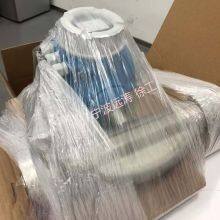ABB Electromagnetic Flowmeters: A Comprehensive User Guide
Introduction
ABB Electromagnetic flowmeters are widely used in various industries for measuring the flow rate of conductive liquids. These flowmeters operate based on Faraday's Law of Electromagnetic Induction, providing accurate and reliable flow measurements without the need for moving parts. This user guide aims to provide a comprehensive overview of ABB Electromagnetic flowmeters, covering installation, operation, maintenance, and troubleshooting.
1. Installation
Proper installation is crucial for the accurate and reliable operation of ABB Electromagnetic flowmeters. Here are the steps to follow:
1.1 Choosing the Right Location
Orientation: The flowmeter can be installed in either a horizontal or vertical position. However, for vertical installations, ensure that the flow direction is upwards to prevent air pockets.
Straight Pipe Runs: To ensure accurate measurements, it is recommended to install the flowmeter in sections of straight pipe. The length of these straight pipe runs may vary depending on the flowmeter model and the fluid being measured.
Avoid Vibrations: The flowmeter should be installed away from sources of vibration, such as pumps and compressors, to prevent interference with the measurement.
1.2 Preparing the Pipes
Pipe Material: Ensure that the pipes connecting to the flowmeter are compatible with the fluid being measured and the operating conditions.
Pipe Size: The pipe size should match the flowmeter's inlet and outlet connections.
Flanges: Use appropriate flanges and gaskets to connect the flowmeter to the piping system. Ensure that the flanges are properly aligned and tightened to prevent leaks.
1.3 Mounting the Flowmeter
Support: The flowmeter should be securely mounted to a sturdy support structure. This prevents movement and ensures accurate measurements.
Orientation: If the flowmeter has a specific orientation requirement (e.g., the flow direction arrow should point upwards), ensure that it is installed accordingly.
1.4 Calibration
Factory Calibration: ABB Electromagnetic flowmeters are typically factory-calibrated. However, it is recommended to verify the calibration upon installation.
Field Calibration: If necessary, field calibration can be performed using a calibration kit or by following the manufacturer's instructions. This may involve adjusting the flowmeter's settings or using reference fluids with known properties.
2. Operation
Once the flowmeter is installed and calibrated, it is ready for operation. Here are some key points to consider:
2.1 Startup
Power On: Turn on the power supply to the flowmeter. The transmitter will initialize and may perform a self-check.
Communication Setup: If the flowmeter is integrated into a control system, configure the communication settings to ensure data transmission.
2.2 Monitoring
Display: The transmitter typically has a display that shows real-time flow measurements. Monitor these values to ensure they are within expected ranges.
Alarms and Alerts: Set up alarms and alerts in the control system to notify operators of abnormal conditions, such as low flow rates or high temperatures.
2.3 Data Logging and Analysis
Data Logging: Many ABB Electromagnetic flowmeters support data logging. This feature allows for the storage of historical data, which can be useful for analysis and troubleshooting.
Analysis Tools: Use the manufacturer's software or third-party tools to analyze the logged data. This can help identify trends, detect leaks, and optimize process efficiency.
3. Advanced Features and Options
ABB Electromagnetic flowmeters offer a range of advanced features and options to meet specific application requirements. These may include:
Multi-Variable Measurement: Some models can measure additional parameters such as temperature and conductivity.
Diagnostics and Predictive Maintenance: Advanced diagnostics can detect potential issues before they cause downtime. Predictive maintenance features can help optimize maintenance schedules.
Hazardous Area Approvals: Flowmeters are available with approvals for use in hazardous areas, such as intrinsically safe or explosion-proof designs.
Customizable I/O: Some models offer customizable input/output options to meet specific integration requirements.
Conclusion
ABB Electromagnetic flowmeters are highly accurate and reliable instruments for measuring the flow rate of conductive liquids. Proper installation, operation, and maintenance are crucial for ensuring optimal performance. By following the guidelines provided in this user guide, users can maximize the benefits of ABB Electromagnetic flowmeters and improve process efficiency and safety.

Send Inquiry to This Supplier
You May Also Like
-
Siemens Ultrasonic FlowmetersNegotiableMOQ: 1 Unit
-
Siemens Coriolis Mass FlowmetersNegotiableMOQ: 1 Unit
-
Krohne FlowmetersNegotiableMOQ: 1 Unit
-
Krohne Coriolis Mass FlowmetersNegotiableMOQ: 1 Unit
-
Krohne Ultrasonic FlowmetersNegotiableMOQ: 1 Unit
-
Krohne Electromagnetic FlowmetersNegotiableMOQ: 1 Unit
-
Krohne Vortex FlowmetersNegotiableMOQ: 1 Unit
-
Yokogawa FlowmetersNegotiableMOQ: 1 Unit
-
Yokogawa Coriolis Mass FlowmetersNegotiableMOQ: 1 Unit
-
Yokogawa Electromagnetic FlowmetersNegotiableMOQ: 1 Unit












